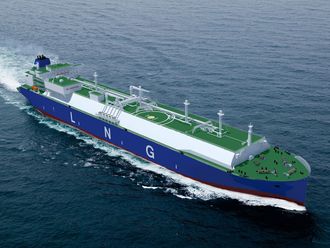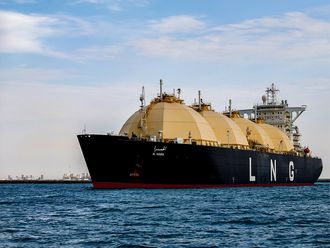Melbourne: Oil fell in New York as investors locked in profits after the biggest price surge in three years amid forecasts that data today will signal Europe’s economic slump is deepening.
Futures declined as much as 1.6 per cent after gaining 9.4 per cent on Friday. The jobless rate in the euro area probably rose to 11.1 per cent in May from 11 per cent the prior month, economists surveyed by Bloomberg News said before data today. It would be the highest on record going back to 1990. China’s manufacturing activity slowed in June, according to HSBC Holdings Plc and Markit Economics. A European embargo on Iranian oil started yesterday.
“It looks like profit-taking today,” Michael Poulsen, an analyst at Global Risk Management in Middelfart, Denmark, said. “Speculators who caught the right side of the trade when prices rallied last week are taking off some risk.”
Crude for August delivery dropped as much as $1.44 to $83.52 a barrel in electronic trading on the New York Mercantile Exchange and was at $83.85 at 8.58am London time. The contract gained $7.27 on June 29 to $84.96, the highest close since June 6. Prices decreased 18 per cent last quarter, the most since the final three months of 2008, and slipped 1.8 per cent last month.
Brent oil for August settlement on the London-based ICE Futures Europe exchange declined as much as $1.75, or 1.8 per cent, at $96.05 a barrel. The European benchmark crude was at a $12.50 premium to New York contracts compared with $12.84 on Friday.
Bullish bets
Prices surged on Friday because of optimism the European debt crisis may be contained after leaders agreed to ease repayment rules for emergency loans to Spanish banks and relax conditions on help for Italy. Hedge funds raised bullish oil bets for the first time in eight weeks before the price rise, according to a weekly report from the US Commodity Futures Trading Commission.
Crude’s jump brought prices in New York close to technical resistance, prompting investors to sell futures. The August contract has resistance at $85.33 a barrel, the 23.6 per cent Fibonacci retracement of the drop to last week’s intraday low of $77.28 from the March 1 high of $111.38, according to data compiled by Bloomberg. Sell orders tend to be clustered near chart-resistance levels.
Iran supplies
The EU banned the purchase, transportation, financing and insurance of Iranian oil because of the nation’s nuclear programme. The insurance embargo affects 95 per cent of the world’s tankers because they’re covered by the 13 members of the London-based International Group of P&I Clubs.
Iran was producing about 3.2 million barrels a day in May, according to estimates compiled by Bloomberg. Full implementation of sanctions will remove about 1 million barrels a day during the second half of the year as buyers disappear and Iranian storage tanks become full, the Paris-based International Energy Agency said in a June 13 report.
“The Iranian import ban is well known, but now that it’s officially coming into effect, this also helps sentiment for oil prices,” Hannes Loacker, an analyst at Raiffeisen Bank International AG in Vienna, said. “If Brent moves above $100, its gains can go very fast from here, but if some headwinds from the Eurozone pop up it will take longer.”
Opec meeting
A reduction in Iranian exports may become the biggest supply disruption from a member of the Organisation of Petroleum Exporting Countries (Opec) since an armed rebellion all but halted pumping in Libya last year, according to the IEA. A strike by oil workers in Norway also curbed flows from North Sea fields.
Iran called on Opec to hold an emergency meeting to address the group’s production in excess of the targeted 30 million barrels a day, Mehr news agency reported on Saturday, citing the country’s oil minister.












